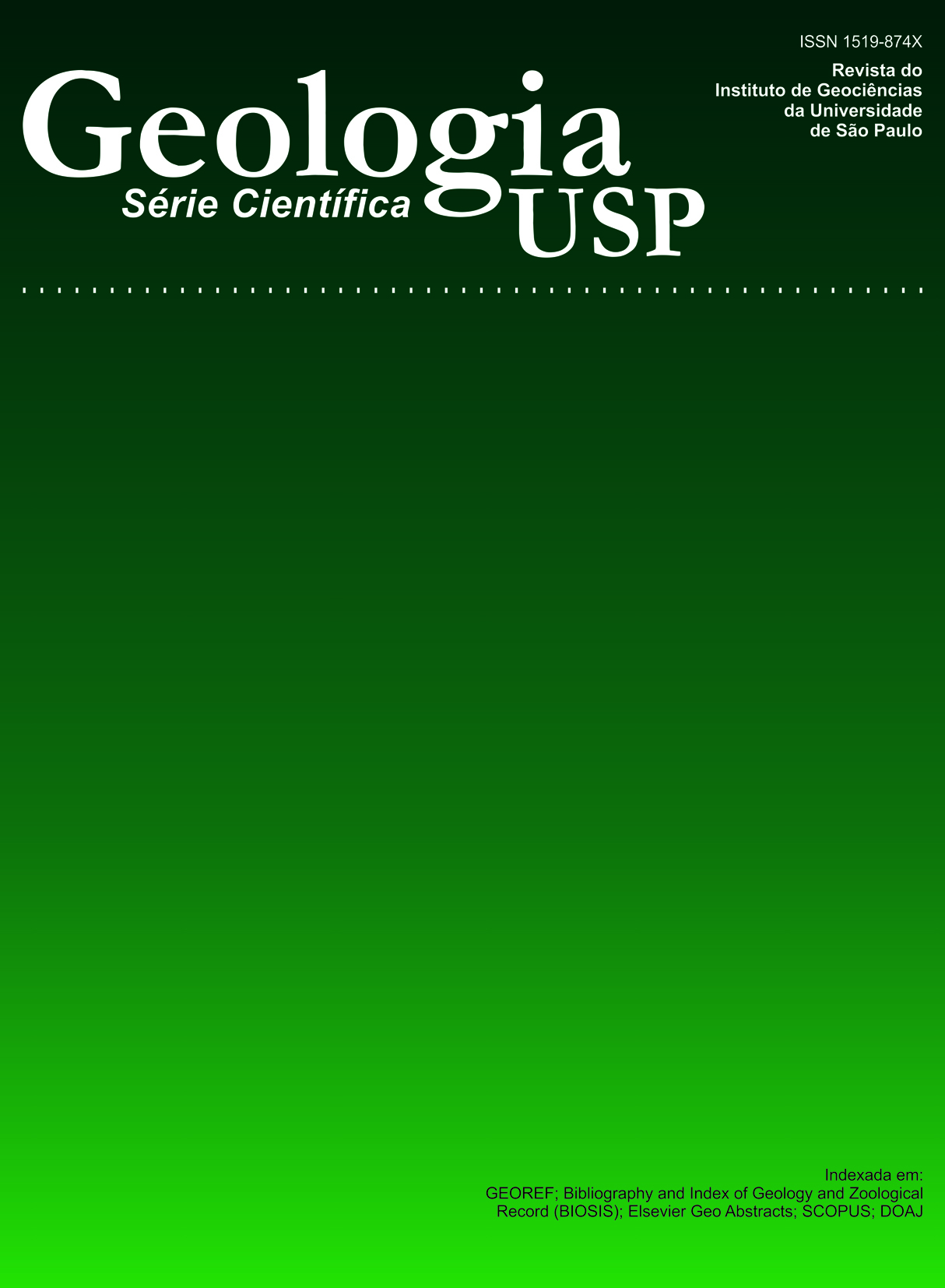Petrografia, geoquímica e geocronologia das rochas do orógeno Rio Alegre, Mato Grosso: um registro de Crosta oceânica mesoproterozóica no SW do Cráton Amazônico
DOI:
https://doi.org/10.5327/S1519-874x2004000100005Keywords:
Ocean floor rocks, Amazonian Craton, MesoproterozoicAbstract
The volcano-sedimentary rocks of the Rio Alegre terrane occur in the SW part of the Amazonian Craton and comprise mafic and ultramafic volcanic rocks, chemical sedimentary rocks, and mafic to felsic intrusive rocks metamorphosed at greenschist to low amphibolite facies. Petrographic, chemical and isotopic studies allowed the subdivision of the complex into three subunits: the basal Minouro formation comprises abundant basic to ultrabasic volcanic rocks and subvolcanic intrusive rocks associated with cherts and banded iron formations. Chemical data indicate an ocean-floor tectonic setting for these rocks; the middle Santa Isabel formation comprises intermediate and acid lavas and pyroclastic rocks. Chemical results indicate an island arc setting for them, which is corroborated by the U-Pb zircon ages of 1509 - 1503 Ma and T DM ages of 1.54 Ga and 1.48 Ga and µNd(t) values from +3.7 to +4.1 for the intermediate rocks, suggesting a mantle origin for the magmas. The uppermost São Fabiano formation is composed of metasedimentary rocks with a chemical signature similar to that of the volcanic rocks, suggesting that the latter are the source rocks. The basic to ultrabasic intrusive rocks are differentiated gabbroic rocks and serpentinites. Chemical data indicate the influence of fractional crystallization in the evolution of these rocks. U-Pb zircon dating of these rocks yielded ages from 1509 Ma to 1494 Ma, T DM of 1.67 to 1.48 Ga, and µNd(t) values of +4.5 to +2.5 suggesting mantle-derivation. U-Pb zircon analyses carried out on associated intrusive basic and felsic rocks yielded ages of 1.48 - 1.46 Ga. T DM ages vary from 1.53 Ga to 1.50 Ga and µNd(t) values from +3.7 to +4.1 suggesting that they were generated in a magmatic arc environment. The lithologic association, chemical and isotopic evidence suggest that volcanic and subvolcanic basic and ultrabasic rocks originated in a back-arc basin or ocean ridge; and that the basic to intermediate rocks were formed in an island arc setting at 1.51 - 1.50 Ga. These rocks were later intruded at 1.48 - 1.46 Ga by basic and felsic rocks formed in a magmatic arc setting. Metamorphism under green-schist to lower amphibolite facies (biotite to garnet-kyanite zone), and mylonitization producing a N20W foliation were associated with collision of the arc against the Amazonian Craton during Mesoproterozoic time.Downloads
Download data is not yet available.
Downloads
Published
2004-04-01
Issue
Section
Articles
License
Authors who publish in this journal shall comply with the following terms:
- Authors keep their copyright and grant to Geologia USP: Série Científica the right of first publication, with the paper under the Creative Commons BY-NC-SA license (summary of the license: https://creativecommons.org/licenses/by-nc-sa/4.0 | full text of the license: https://creativecommons.org/licenses/by-nc-sa/4.0/legalcode) that allows the non-commercial sharing of the paper and granting the proper copyrights of the first publication in this journal.
- Authors are authorized to take additional contracts separately, for non-exclusive distribution of the version of the paper published in this journal (publish in institutional repository or as a book chapter), granting the proper copyrights of first publication in this journal.
- Authors are allowed and encouraged to publish and distribute their paper online (in institutional repositories or their personal page) at any point before or during the editorial process, since this can generate productive changes as well as increase the impact and citation of the published paper (See The effect of Open Access and downloads on citation impact).
How to Cite
Matos, J. B. de, Schorscher, J. H. D., Geraldes, M. C., Souza, M. Z. A. de, & Ruiz, A. S. (2004). Petrografia, geoquímica e geocronologia das rochas do orógeno Rio Alegre, Mato Grosso: um registro de Crosta oceânica mesoproterozóica no SW do Cráton Amazônico . Geologia USP. Série Científica, 4(1), 75-90. https://doi.org/10.5327/S1519-874x2004000100005





